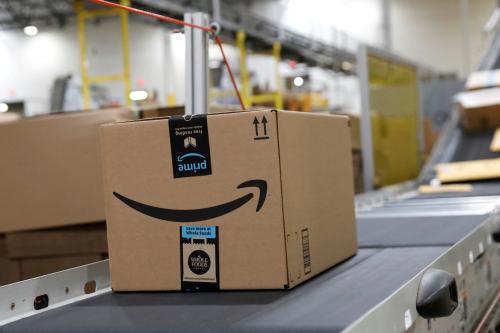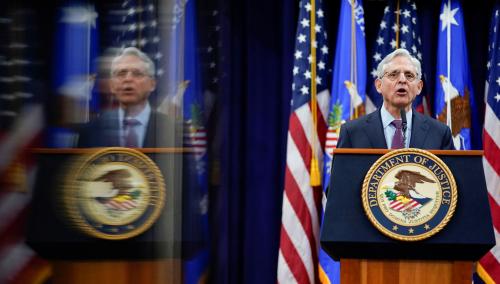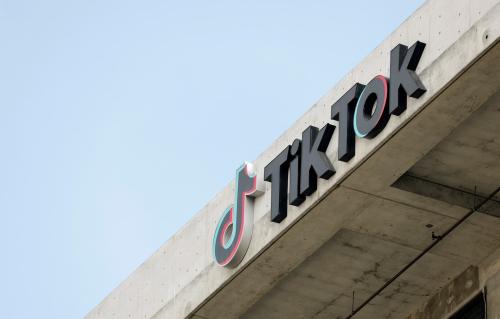This article was originally published on ProMarket on August 31, 2022.
In trying to get their merger approved, Penguin and Simon & Schuster claimed massive, but unverified cost savings. They also have promised that their publishing divisions would compete against each other. Blessing this kind of remedy would make publishing more akin to professional wrestling, whereas real competition is needed to benefit authors and readers.
The preliminary injunction hearing in the Department of Justice complaint to block the acquisition of Simon & Schuster publishers by Penguin Random House has just ended. After further briefing, Judge Florence Y. Pan will render her decision.
This case highlights two shopworn defenses in horizontal mergers that warrant judicial skepticism. Parties defending mergers in concentrated markets routinely say “trust us” that:
- We will continue to compete vigorously, even if the merger creates market power, or in this case, our divisions will still compete against one another—even though we will own them both; and
- In any event, our internal, unverified analysis demonstrates that the efficiencies from the deal dwarf any anticompetitive concerns, and of course, those savings will be shared with consumers.
Judge Pan seems appropriately skeptical of both arguments. Indeed, she already has properly rejected Penguin’s efficiency defense. For efficiency claims to win the day, antitrust precedent and the joint DOJ-FTC Horizontal Merger Guidelines require that they be verified, merger-specific and sufficient to reverse any anticompetitive harms from the merger. Judge Pan found that the defendants’ efficiencies witness and its economic expert simply accepted at face value claimed cost savings generated in-house. Neither independently verified the savings, rendering the claims insufficient.
Judge Pan has not yet ruled on Penguin’s promise that its publishing divisions will compete against each other post-merger in bidding for new books. But she is asking the right questions, including challenging Penguin’s claimed to have such a policy in the past when other evidence suggested that some supposedly competing in-house bids had been coordinated. Moreover, Penguin’s “we promise to compete against ourselves” remedy directly conflicts with the Copperweld doctrine in antitrust law, which mandates that divisions of a corporation be treated as a single actor.
This “remedy” also would not work. Even if Penguin’s promise were legally binding (which it is not), it is effectively unenforceable by a court. How can a court tell if the corporation informally penalizes divisions or individuals that compete “too hard” with other divisions? Unless some executive simply admits to violating the rule in emails, what would be the evidence? All the corporation really needs to do to affect incentives is to provide some compensation on the basis of corporate profits, not just divisional profits. It also can informally provide higher rewards to those who comply. If the corporation ended up awarding lower bonuses to one division or one editor than another, how would the judge figure out that this was because that division overbid for some books? Comparing the behavior of the separate divisions would not work because all the divisions have the incentive to lighten up against each other. Penguin suggests that there could only be a problem if its divisions are the two highest bidders. But this ignores the possibility of one of them deciding not to bid or simply choosing to bid lower. “Phantom bidding” is a classic cartel tactic. It also ignores the fact that the behavior of the merging firms in a concentrated market also could lead rivals to reduce their bids.
“Accepting this remedial structure would turn the antitrust enforcers and US district courts into regulatory commissars.”
It would be easy to ridicule the Penguin remedy as a crazy one-off proposal. But similar “voluntary” fixes, where unitary firms promise to behave as if they are independent, have been proposed for vertical mergers, including the AT&T/Time Warner or the since abandoned Nvidia/ARM merger. The classic example comes from a horizontal merger, the Federal Trade Commission’s Evanston/Northwestern Hospital merger case. In this matter, the merger had been consummated years earlier and the “eggs were already scrambled.” The FTC felt that a divestiture was not in the public interest.
Faced with this difficult situation, the FTC tried to mandate that the two jointly owned hospitals compete against themselves. Even putting aside the ease of evading the remedy, forcing the “independent competition” was problematical. If the two hospitals chose to place some specialties in only one of the two hospitals, the insurers would need to have both hospitals in their networks. In this situation, as amici economists explained, such independent pricing would incentivize higher prices by creating a structure that worsen bargaining leverage for insurers. This is because independent pricing by monopolists each selling a complementary product leads each to ignore the fact that when it raises its price, it reduces the profits of the other firm. But if they price jointly, this adverse spillover effect would be taken into account, which will lead to lower prices as well as higher profits. As a result, it is unlikely that payors would want independent pricing.
Promises to continue to compete when firms no longer have incentives to do make no sense for merger policy. Under this logic, all the book publishers could merge, as long as they promise to continue to compete against themselves. Similarly, AT&T, Verizon and T-Mobile could merge, as could Google and Facebook or all the automobile companies.
Accepting this remedial structure would turn the antitrust enforcers and US district courts into regulatory commissars. This would be in direct conflict with antitrust law going back to the 1927 Trenton Potteries case. In that case, the Supreme Court rejected the defendants’ defense to price fixing that they promised to set only “reasonable” prices. The book publishers’ proposed remedy here is a first step in the direction of accepting such “pie crust promises.”
Neither courts nor expert regulatory agencies could succeed in this task. The regulators lack sufficient information and the regulated firms have too many levers. Nor would requiring arbitration protect consumers. Commercial arbitrators would be unlikely to be able to estimate competitive prices. If the merger leads competitors also to raise their prices, there would be no competitive benchmark for comparison. For the same reason, AT&T’s promise to allow arbitration in the AT&T/Time Warner case was unlikely to protect pay TV distributors.
In the end, blessing this type of merger remedy would make book publishing more like professional wrestling matches than the real market competition that benefits authors and readers.
The Brookings Institution is committed to quality, independence, and impact.
We are supported by a diverse array of funders. In line with our values and policies, each Brookings publication represents the sole views of its author(s).










Commentary
When rhetoric confronts economic reality: Unsupported efficiency claims and unenforceable promises cannot save the book publishers deal
September 9, 2022